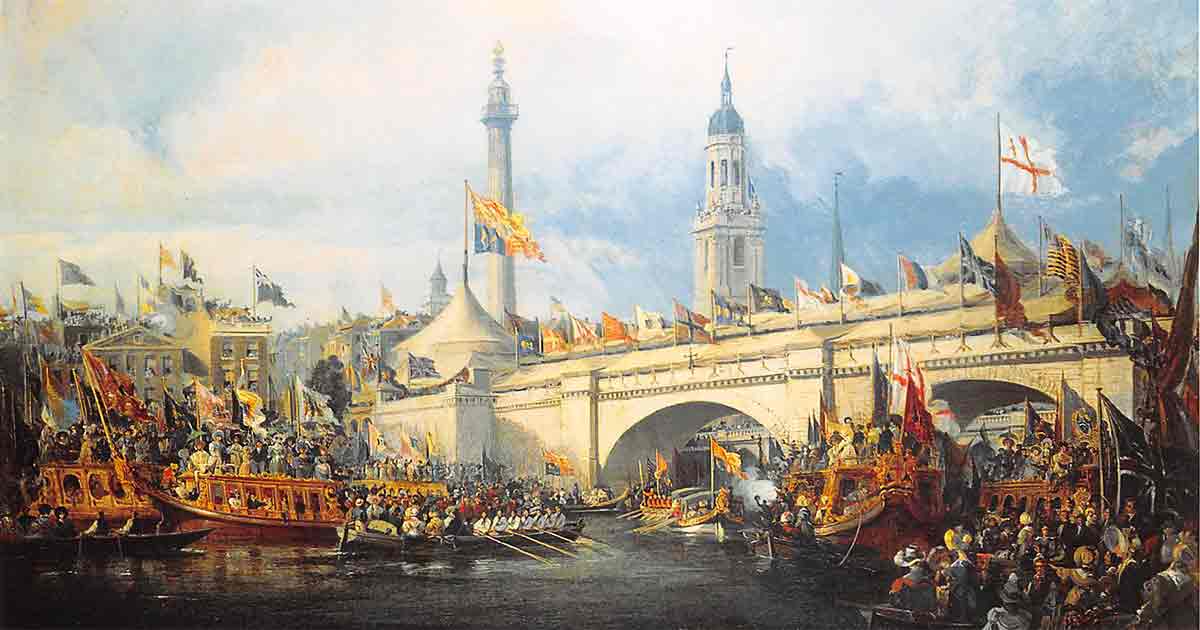Oddly Enough, London Bridge is Now Located in the Arizona Desert
In an unexpected twist of history, the famed London Bridge now stands proudly in the Arizona Desert. Its journey from the heart of London to the American Southwest is a testament to the bridge's storied past, encapsulating centuries of architectural evolution and its surprising transatlantic relocation.
The History of London Bridge: A Tale of Many Incarnations
London Bridge has a history dating back to Roman times. The first known version was a wooden structure constructed by the Romans around 50 AD. Made of timber and clay, it served as a vital crossing over the River Thames. Without it, Londinium may not have flourished into the London we know today.
However, it was not until the 12th century that the iconic stone bridge we associate with London Bridge began to take shape. The Old London Bridge, completed in 1209, featured a series of stone arches covered in shops and houses. For over 600 years, this bridge was the only bridge serving the entire city, generating huge revenue for City of London Corporation that was found ed in 1067.

View of the Old London Bridge by Claude de Jongh, circa 1632. (Public domain)
Despite its medieval charm, it faced numerous challenges over the centuries, including congestion and structural issues. Its stone supports took up more than 80 percent of the riverbed which meant that it acted like a dam. By the 19th century, it became clear that a new bridge was needed to accommodate the growing population and traffic demands of London.
Construction began on the New London Bridge about 30 meters (100 feet) upstream. Designed by engineer John Rennie, it was completed in 1831. Once its predecessor had been demolished, the New London Bridge served as a symbol of London's progress and prosperity during the Victorian era.
The New London Bridge featured a more robust design with five granite arches and improved navigational clearance for ships passing beneath. However, by the mid-20th century, the bridge's infrastructure was showing signs of deterioration, prompting discussions about its future.
- Babylon's Monumental Ishtar Gate Travelled from Iraq to Germany
- Dizzying Inca Rope Bridges Were Grass-Made Marvels of Engineering

The famed London Bridge was purchased from London and reconstructed at Lake Havasu City in the Arizona Desert. (EWY Media / Adobe Stock)
A Transatlantic Journey: The London Bridge and its Move to Arizona
The destiny of London Bridge took an unforeseen turn in the 1960s due to increasing demand to accommodate motor vehicles. Rather than demolishing the historic structure, it was put up for sale. Despite facing skepticism, in 1968 the American entrepreneur Robert P. McCulloch purchased the bridge for $2.46 million. McCulloch's vision was to transport the bridge to Lake Havasu City, Arizona, where it would become a centerpiece of a planned resort community.
The ambitious engineering project involved dismantling the bridge stone by stone and shipping it across the Atlantic Ocean to its new home in the Arizona Desert. Over the course of three years, the bridge was painstakingly reconstructed over a man-made channel in Lake Havasu.
On October 10, 1971, London Bridge was officially dedicated in its new location, marking the culmination of an extraordinary journey from the banks of the River Thames to the arid landscape of the American Southwest. Even today, the bridge draws visitors from around the world, making it the second most popular tourist attraction in Arizona, after the Grand Canyon.
Top image: The Opening of the New London Bridge (completed in 1831) by George Chambers. Source: Public domain

















